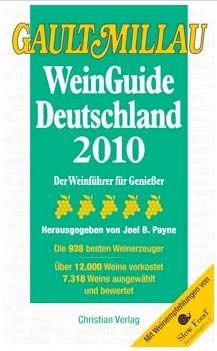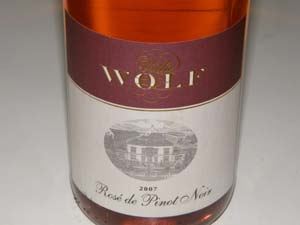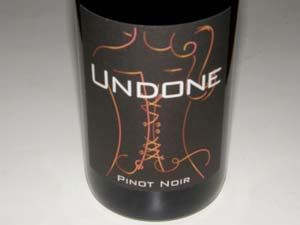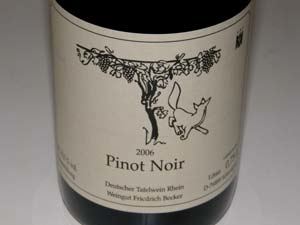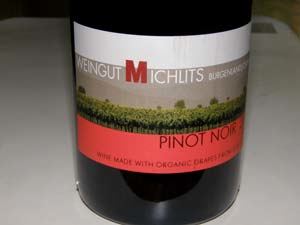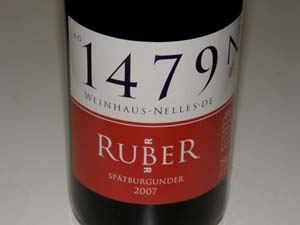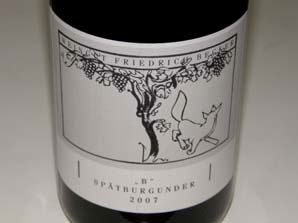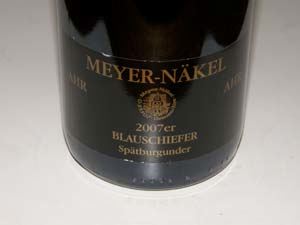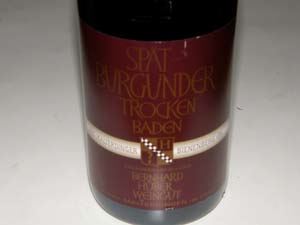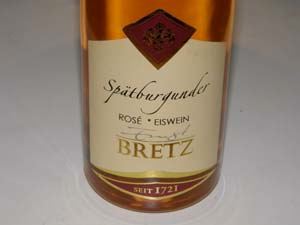Spätburgunder
The Germans are in love with Pinot Noir, or as they call it, Blauer Burgunder, or “Blue Burgundian,” and the
marked improvement in quality in recent years has led to a widespread demand for it both in Germany and
abroad. The term, Spätburgunder, is used synonymously with Burgunder by the Germans and the Austrians
and Swiss. Spätburgunders were traditionally light red, sometimes sweet, wines, but in the last twenty years,
serious Burgundian-styled dry Spätburgunder has been made in the Rhine Valley of southwestern Germany.
The prime growing territory for Spätburgunder are the wine regions of Ahr, Mosel, Baden, Rheingau, and
Rheinhessen, areas best known for Riesling. Spätburgunder is the most widely planted red grape in Germany
and accounts for 11.5 percent of the country’s total vineyard area.
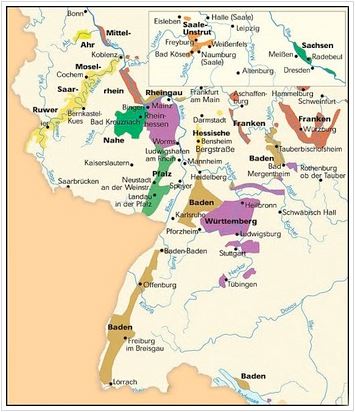
There is only a trickle of information available about German Pinot Noir and very little of the best examples
reach the United States. I have had a few here and there and have not been impressed until I tasted the wines
reviewed below. The standing joke about Spätburgunder has been, “Isn’t Spätburgunder the stuff the guys
from Burgundy spat out?”
With the 2000 vintage, Germany instituted the designations “Classic” and “Selection” to simplify matters for
consumers. Classic wines can be from any of the 13 German winegrowing regions (see map above), the
wines must be above average in quality, dry, and made from a traditional grape variety such as Riesling or
Burgunder. The labels bear the Classic logo next to the name of the traditional grape variety. Vineyard names
are omitted to leave the labels uncluttered and simple for the consumer. Selection wines are carefully chosen,
best of the vintage wines from first-class vineyards where yields are low and harvesting is by hand. The wines
must be bottle aged and dry for Burgunder varietals.
In Germany, Burgunder clones that are resistant to botrytis are preferred. German clonal selections are divided
into five groups: compact clones, loose-berried clones, mixed clones, upright-growing clones, and small-berried clones. The compact clones include the Dijon clones such as 113, 114, 115, 667, 777, 927, 792, 872, 870 and
386, all of which have some resistance to botrytis. They are usually planted on flat, dry sites. The loose berried
clones (includes the Mariafeld clones from Wädenswil) are more resistant to botrytis but in most years,
the quality of the compact clones outweighs the advantage of better botrytis resistance of the loose-berried
clones. The upright-growing clones are used for sparkling wine and Pinot Noir vinified as a white wine. The
small-berried clones come from Freiburg and Geisenheim and are well suited for producing high value red
wines. Due to good botrytis resistance, these clones can be planted in deep and rich soils. There is high
demand for these clones in Germany and they are in limited supply.
The bible on German wines is the Gault Millau WeinGuide Deutschland but it is published only in German and
not available in the United States. This is a shame since it offers ratings on the best producers and extensive
reviews and ratings of wines. An excellent source of information on German wines is Schiller Wine, the blog of
Christian G.E. Schiller, a German living in America (www.schiller-wine.blogspot.com).
Schiller noted recently (www.schiller-wine.blogspot.com/2010/03/germanys-top-winemakersfeinschmecker.
html) that the German wine industry consists of about 70,000, mostly small, wine producers. If
hobby winemakers are excluded, the number is reduced to 30,000 wine makers. If you include only full-time
wine producers with a minimum of 5 hectares, it leaves about 6,000 wineries. Large wineries are rare in
Germany.
Quality Spätburgunder wines are difficult to source in the United States. I found several of the wines reviewed
below through K&L Wine Merchants in California (www.klwines.com). Another source is Truly Fine Wine which
sells exclusively German wines (www.trulyfinewine.com). Prices run the whole gamut, much like New World
Pinot Noir, but high quality examples can often be quite expensive. Try Spätburgunder - you will be pleasantly
surprised!

2009 Villa Wolf Pfalz Germany Rosé de Pinot Noir
11.5% alc., $11.
Imported by Anne’s Boutique Wines, Costa Mesa, CA. Produced by
Ernst Loosen.
·
Moderately deep orange-coral color in the glass. Faint
aromas of oranges, strawberries and rose petals. Tasty and mildly rich
on the palate with appealing flavors of fresh oranges, tart berries and
vanilla cream. A fine example of a Pinot Noir rosé. Very good.

2008 Undone Rheinhassen Germany Pinot Noir
13.0% alc., $13,
screw cap. Imported by Valckenberg International Inc., Tulsa, OK.
Unoaked. Label shows an unraveling corset and the words, “Smooth,
dry, naked flavor.”
·
Moderately light reddish-purple color in the glass.
Welcoming aromas of black cherries, red and black berries and cut
flowers. Light, elegant and charming on the palate with an array of
flavors including cherries, raspberries, boysenberries, red licorice and baking
spices. A tasty, easy drinking, handy wine in an impressive package at an
exceptionally good price. Very good.

2007 Weingut Friedrich Becker Deutscher Tafelwein Rhein Germany Pinot Noir
13.5% alc., $17. Imported by Cellars
International Inc., San Marcos, CA.
·
Moderate reddish-purple
hue in the glass. Attractive perfume of dark berries and toasty
oak. Bright and juicy flavors of mixed berries with a hint of
citrus on the persistent finish. Soft in the mouth with gossamer
tannins. A very classy wine that was even more incredible the next day from a
previously opened and re-corked bottle. Achtung! An unbelievable value and
highly recommended.

2007 Weingut Michlits Burgenland/ Österreich Austria Pinot Noir
14.0% alc., $20. Imported by Presscott Wines Inc., NY, NY. Made
from organic grapes.
·
Moderately dark garnet color in the glass. A
panoply of dark berry aromas clothed in toasty oak. Impressively rich
mid palate attack of black cherry and black raspberry fruit with a hint of
cola. Comforting mouthfeel with mildly aggressive tannins and bright
acidity. Better over time in the glass. A charming wine that should benefit from
even more time in the cellar. Very good.

2007 Weinhaus Nelles De Ruber Spätburgunder Trochen AD 1479N Ahr German Pinot Noir
13.5% alc., $22. Imported by
WineSellers, Ltd., Skokie, Ill.
·
Moderate color. Crazy about the nose
which is flush with black cherry, ripe strawberry and underbrush
aromas that keep getting better and better over time in the glass. A
smooth, soft, fruit-driven wine rich with cherry and berry fruit accented
with a gentle touch of oak. On the lighter side with mild tannins and respectable
finesse. The nose trumps the flavors and the finish falls off quickly, but still a
solid wine. Very good (-).

2007 Weingut Friedrich Becker “B” Spätburgunder Pfalz Germany Pinot Noir
13.0% alc., $42. Imported by Cellars International Inc., San
Marcos, CA.
·
Moderate reddish-purple color in the glass. The nose is
intensely fruity and hi-toned featuring scents of black cherries, spice and
old cask. Discreetly concentrated blackberry jam essence with hints of
black tea and oak. Soft tannins and balancing acidity. Picks up interest
and power with time in the glass. Even better the next day from a previously
opened and re-corked bottle. Very impressive wine with age ability.
2007 Meyer-Nuäkel Blauschiefer (“Blue Slate”) Spätburgunder Ahr German Pinot Noir
13.5% alc., $45. Imported by Cellars International Inc, San Marcos,
CA (Rudi Wiest).
·
Moderate reddish-purple color. Lovely perfume of wild berry
compote, dried rose petals, tobacco and wet earth. A serious wine with a savory
bent. Dense, darkly fruited and earthy with restrained tannins and a very
sensual mouth feel. Assumes more intensity and interest over time in the glass.
Very good (+).
2005 Weingut Bernhard Huber Spätburgunder Trochen Baden Germany Pinot Noir
13.5% alc., $60. Imported by Valckenberg International Inc, Tulsa,
OK.
·
Moderately intense reddish-purple color in the glass. The nose lacks fruit,
emphasizing aromas of wine cellar, oak char, petrol and ash. A decent core of
darker fruits is over ridden by notes of oak, earth and mushroom. Modest
richness with soft tannins, a smooth texture and a dry finish. Decent.
2004 Weingut Ernst Bretz Spätburgunder Rosé Eiswein
8.0% alc., $33, 375
ml. Imported by WineSellers Ltd., Skokie, Ill.
·
Golden apricot color in the glass.
Aromas of lemon curd, white stone fruits and roasted nuts. Delicious and
intense core of white peaches and apricots with a hint of strawberries that lasts
and lasts. Slightly viscous. A real treat especially at this low alcohol level. A
great wine for those with a sweet tooth. Tastes similar to a late harvest Pinot
Gris (a good wine to fool your friends with as they would never guess this wine is
Pinot Noir). Very good (+).




